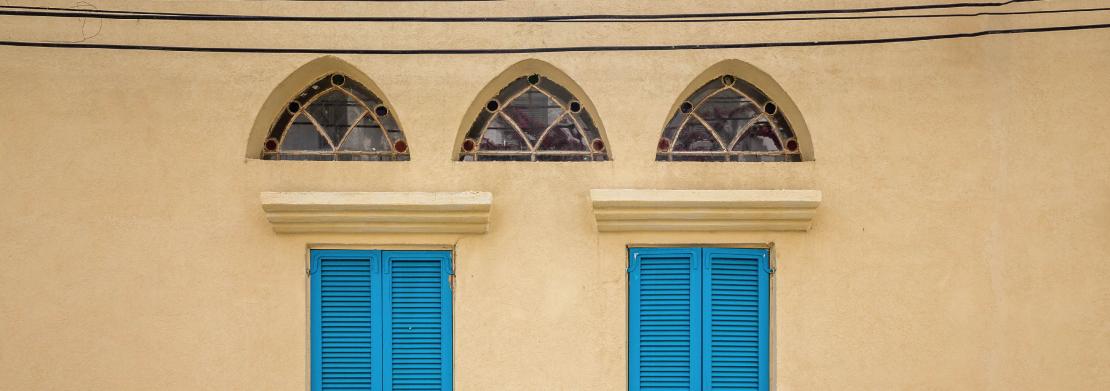From Concrete to Green: The Face of Architecture
Climate change, the depletion of natural resources, and the rapid pace of urbanization are among the global issues profoundly affecting contemporary architecture. In this context, the concept of sustainable architecture emerges not merely as a design approach, but as a holistic understanding encompassing environmental, social, and economic responsibilities.
To explore current approaches in this field and the challenges faced, we conducted an in-depth interview with Assoc. Prof. Dr. Ehsan Reza, a faculty member at the Faculty of Fine Arts, Design, and Architecture at Cyprus International University. Reza shared his insights on the relationship between vernacular architecture and sustainability, the role of the public, the obstacles architects encounter, and the principles of future design. He emphasized the importance of public education, recognizing the value of natural resources, and ensuring their efficient use. Reza stressed that a truly sustainable structure must not only be efficient but also harmonious, inclusive, and resilient over time. He also discussed the education and projects they are developing in this field at CIU.

1. Can you explain the concept of sustainable architecture to our readers?
This has indeed become one of the most crucial keywords today. To understand sustainable architecture, we should begin by asking “when did this concept emerge?” Sustainable architecture gained prominence in the second half of the 20th century, in response to environmental crises and growing awareness of resource limitations. It was shaped by the lessons of the energy crises of the 1970s and inspired by movements such as green architecture and climate-responsive design.
The concept focuses on the intelligent use of natural resources, energy efficiency, and environmentally friendly materials, while also prioritizing the health and comfort of users. Furthermore, it includes social and economic dimensions, aiming to ensure long-term value and justice for both people and the planet.
Considering climate change and environmental factors, sustainability has become a central idea in architecture, just as it has in many other fields.
2. What advantages does vernacular architecture offer in terms of sustainability?
Vernacular architecture, described by pioneers like Bernard Rudofsky as “architecture without architects,” does not adhere to a specific style or trend. We can also refer to it as “architecture by the people, for the people.” This approach complies with the rules of the environment—local people build using the available materials and techniques. It consists more of methods and practices than fixed styles.
According to other pioneers like Amos Rapoport, vernacular architecture lacks a distinct style. Its roots are embedded in green architecture, which emphasizes the proper use of natural resources. Given the current threat of resource depletion, it’s clear that there’s a strong connection between vernacular architecture and sustainability. In vernacular architecture, sustainability occurs unconsciously.
Vernacular architecture takes shape naturally based on environmental factors like climate, sunlight, and local culture. Instead of separating from its surroundings, it integrates with them. This harmony—enabled by the use of local materials and traditional knowledge—reduces environmental impact and supports the local economy. As academics like Marcel Vellinga and Amos Rapoport highlight, this context-based approach makes vernacular architecture inherently sustainable and a rich source of inspiration for modern designs.
3. As an architect, what are the biggest challenges in designing environmentally conscious, energy-efficient, and healthy housing?
Designing sustainable housing today involves numerous interconnected and complex challenges.
First, cultural diversity and changing social needs. In the past, societies were more culturally homogenous and spatial needs were clearer. But today, societies are much more diverse and globalized. For instance, we live in Northern Cyprus, where there’s been a large influx of immigrants. Your neighbors may come from different countries and cultures, which changes the range of needs. Yet vernacular architecture evolved in fixed settlements among people sharing the same culture. Second, limited natural resources. Traditional architecture used locally abundant materials. But today, natural resources are under pressure and rapidly depleting. Architects must now find ways to use recyclable or renewable materials without disturbing environmental balance. Third, adapting traditional ideas to modern standards. Applying principles of vernacular architecture to modern building codes—especially regarding structural safety, earthquake resistance, and high-density urbanization—is a major challenge. For example, if we want to use the traditional yellow stones of Cyprus as structural elements today, we must do so using specific techniques.
Fourth, land scarcity and urban density. In the past, more open land was available. Today, especially in cities, land is scarce and expensive. Meeting sustainability goals must now occur within dense, vertical building typologies. Finally, financial constraints and legal barriers. Natural materials are often more expensive. For example, instead of real wood, cheaper laminated wood is used. Additionally, certain regulations or investor resistance can slow innovation.
Sustainable architecture is not just about technology—it requires balancing the environment, economy, culture, and society.

4. What should the public pay attention to in order to achieve sustainability goals in an architectural project?
We must talk about the responsibilities of both architects and society. Public education, understanding the value of natural resources, and ensuring their efficient use are crucial. Public awareness and user behavior are key determinants in the success of sustainable buildings. The public must adopt energy-saving habits—such as using appliances consciously, avoiding water waste, and contributing to recycling. Even the most advanced green building can fail if not used properly.
5. How can the United Nations' Sustainable Development Goals be implemented in architecture? Especially in housing projects, what needs to change?
The UN’s Sustainable Development Goals (SDGs), adopted in 2015, were created to end poverty, protect the planet, and ensure prosperity for all. Among the 17 goals, several are particularly relevant to architecture: Goal 3: Good Health and Well-being, Goal 6: Clean Water and Sanitation, Goal 7: Affordable and Clean Energy, Goal 13: Climate Action and Goals 14 & 15: Life Below Water and Life on Land. These goals can guide architectural practices in creating healthier, more sustainable, and resilient living environments. However, the world is changing rapidly—due to political influences and technological developments, I believe these goals should be revised before 2030.
For example, solar energy (PV panels) is not yet used efficiently in Cyprus. Only in selected areas—like our campus—we can see that sustainability is implemented correctly. We’re working to increase this awareness in academic settings. We direct students toward sustainability-themed projects and theses. Currently, my doctoral students are working on housing projects in the İskele region. The data from these projects will be shared with local governments to help spread sustainable practices more broadly.
6. What core principles would you recommend for future architects regarding sustainability?
For future architects, sustainability should not be seen as an optional feature but as a mindset. This mindset should shape both the construction process and the final structure. Architects should consider a building’s entire life cycle from the outset: choosing low-energy materials, minimizing waste, and reducing environmental damage during construction. Integrating renewable energy systems, implementing water-saving strategies, and applying passive design techniques are also key. Once a building is completed, it should respond not only to its physical environment but also to the social and cultural needs of its users. A truly sustainable structure must be not only efficient but also harmonious, inclusive, and resilient over time. This understanding aligns with the UN's SDGs—particularly Goals 3, 6, 7, 11, and 13. In short, sustainable design is a long-term ethical responsibility that places the human, the planet, and purpose at the center of every decision.